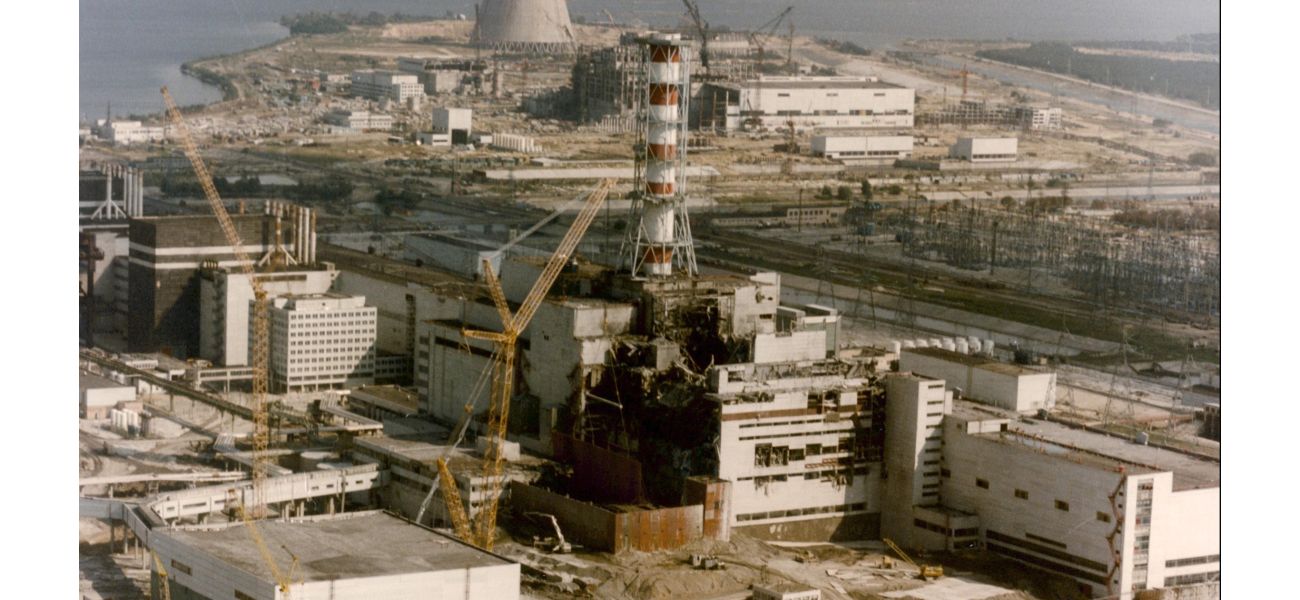Fungus in Chernobyl zone absorbs harmful radiation.
In 1986, a reactor meltdown at a nuclear plant released smoke and caused thousands of deaths due to radiation.
December 24th 2024.

Deep within the Chernobyl Nuclear Power Plant, in one of the most radioactive reactors, an unlikely organism is thriving. A fungus, known as Cladosporium sphaerospermum, has been discovered growing on the walls of the infamous No. 4 reactor, where the highest levels of radiation have been detected.
It's hard to imagine that anything could survive in such a deadly environment, given the catastrophic meltdown that occurred in 1986. The resulting explosion released a cloud of smoke and radiation, leading to thousands of deaths and the evacuation of an entire city, Pripyat, which remains abandoned to this day within a 19-mile exclusion zone.
But this black fungus, along with others such as Wangiella dermatitis and Cryptococcus neoformans, has adapted to the radiation and is actually absorbing it. These fungi belong to a group known as "radiotrophic fungi," which have the unique ability to use radiation for their metabolic processes, essentially allowing them to grow and thrive based on the amount of radiation they absorb.
This discovery is not new, as scientists first observed the growth of these fungi in the early 1990s. However, it is a remarkable feat that these organisms are able to not only survive but also potentially aid in the cleanup of radioactive waste.
In fact, these fungi could even play a role in protecting humans from radiation during long-distance space missions. Cosmic radiation is a significant barrier to deep space exploration, with scientists emphasizing the need for maximum shielding if we hope to eventually colonize other planets. To test the potential of these fungi, researchers sent a sample variety from Chernobyl to the International Space Station and monitored its growth in a petri dish for 30 days. The results showed a 2% reduction in radiation, compared to a non-radioactive sample.
The city of Pripyat, Ukraine, remains a haunting reminder of the devastating effects of nuclear disasters. But within its abandoned walls, a small glimmer of hope can be found in the form of these resilient fungi. As we continue to reach for the stars, with plans to return to the moon by 2024 and eventually establish a presence on Mars by 2028, the need for innovative solutions to address the hazards of prolonged habitation in space becomes increasingly important.
One of the foremost threats to the health of astronauts on long-duration deep space missions is radiation. Therefore, finding ways to mitigate this risk is crucial. The discovery of these radiotrophic fungi and their potential to reduce radiation exposure is a promising step towards making space exploration safer for humans. Perhaps one day, these fungi will not only help us clean up our planet but also protect us on our journeys to the stars.
It's hard to imagine that anything could survive in such a deadly environment, given the catastrophic meltdown that occurred in 1986. The resulting explosion released a cloud of smoke and radiation, leading to thousands of deaths and the evacuation of an entire city, Pripyat, which remains abandoned to this day within a 19-mile exclusion zone.
But this black fungus, along with others such as Wangiella dermatitis and Cryptococcus neoformans, has adapted to the radiation and is actually absorbing it. These fungi belong to a group known as "radiotrophic fungi," which have the unique ability to use radiation for their metabolic processes, essentially allowing them to grow and thrive based on the amount of radiation they absorb.
This discovery is not new, as scientists first observed the growth of these fungi in the early 1990s. However, it is a remarkable feat that these organisms are able to not only survive but also potentially aid in the cleanup of radioactive waste.
In fact, these fungi could even play a role in protecting humans from radiation during long-distance space missions. Cosmic radiation is a significant barrier to deep space exploration, with scientists emphasizing the need for maximum shielding if we hope to eventually colonize other planets. To test the potential of these fungi, researchers sent a sample variety from Chernobyl to the International Space Station and monitored its growth in a petri dish for 30 days. The results showed a 2% reduction in radiation, compared to a non-radioactive sample.
The city of Pripyat, Ukraine, remains a haunting reminder of the devastating effects of nuclear disasters. But within its abandoned walls, a small glimmer of hope can be found in the form of these resilient fungi. As we continue to reach for the stars, with plans to return to the moon by 2024 and eventually establish a presence on Mars by 2028, the need for innovative solutions to address the hazards of prolonged habitation in space becomes increasingly important.
One of the foremost threats to the health of astronauts on long-duration deep space missions is radiation. Therefore, finding ways to mitigate this risk is crucial. The discovery of these radiotrophic fungi and their potential to reduce radiation exposure is a promising step towards making space exploration safer for humans. Perhaps one day, these fungi will not only help us clean up our planet but also protect us on our journeys to the stars.
[This article has been trending online recently and has been generated with AI. Your feed is customized.]
[Generative AI is experimental.]
0
0
Submit Comment





